
Hybrid Home: Solar+Wind Renewable Energy Systems
Last Updated: Mar 10, 2025Producing your own clean, renewable energy is one of the most fundamental aspects of becoming energy independent at home. But most homeowners think this means only solar panels for their roofs. Hybrid systems that tap both the sun and the wind for power can be a good fit for some homes.
Background on Residential Renewable Energy Systems
The national grid is slowly shifting towards renewable energy systems. In fact, according to a 2012 study by the National Renewable Energy Laboratory, renewable energy sources can provide up to 80% of the electricity needs of the United States by 2050. Fortunately, this can be achieved by using technologies that are already commercially available today. However, the power grid is inherently inefficient. The US Energy Information Administration estimates that electricity transmission and distribution losses average about 5%. These losses occur during the transmission and distribution of electricity from power stations through power lines to people's homes and offices.
On a national level, we are making progress. In 2017, over 21% of the renewable energy produced in the US came from wind power, while 7% came from solar power.
When homeowners are ready to install a renewable energy system on their property, most people think that the decision comes down to wind turbines OR solar panels. If you live in an area with lots of sun, you would probably opt for installing solar panels on your roof. If you live in an area where long, cloudy days are regular and winds are high, you would most likely consider investing in a small, residential wind turbine.
Table of Contents
- What Are Hybrid Wind and Solar Electric Systems?
- Pros of Hybrid Energy Systems
- Cons of Hybrid Wind-Solar Energy Systems
- Keys to Getting Started With Hybrid Solar Wind Power Systems
- Popular Hybrid Solar and Wind Power Systems
- The Bottom line on Solar Wind Hybrid Systems

The problem with choosing between wind and solar is that you limit the amount of energy that your home can produce. With solar panels, you obviously will not be able to produce energy during the nighttime hours, and extended cloudy periods will significantly reduce the power you can collect.
Similarly, wind turbines can produce energy at all hours of the day, but only when the wind is present. In many areas of the country, the wind is seasonal. When this is the case, you may be able to produce large amounts of energy during parts of the year and close to nothing during other parts of the year.
So, it makes sense to diversify and increase the chances of successful, year-round energy collection. Below, we look at how hybrid renewable energy systems can help homeowners, apartment complexes, and small communities initiate the shift towards clean and renewable energy.

What Are Hybrid Wind and Solar Electric Systems?
Hybrid systems combine two (or potentially more) types of renewable energy. The most common hybrid renewable energy system is a combination of rooftop solar panels and a small or medium-sized residential wind turbine.
For people looking to go off-grid, hybrid systems allow you to produce energy around the clock. This way, you can decrease the size of the battery system needed to power your home during the night. For residential, grid-connected, renewable energy systems, you will be able to decrease your reliance on the energy grid.
Most grid-connected renewable energy systems give energy to the grid during the day when it is sunny and then pull energy from the grid during the night. In contrast, hybrid systems allow you to collect wind energy during the nighttime hours. In certain areas, where both wind and sun are abundant, you might even be able to become zero-carbon or net-positive. If you have a net-positive home, it will produce more energy than your household consumes.
Pros of Hybrid Energy Systems
The ability to power your home without releasing greenhouse gasses into the atmosphere is a great benefit for all environmentally conscious homeowners. What is even better is that this switch to hybrid renewable energy systems brings savings to the household budget, reducing electricity bills every month.
In addition, the upfront cost can be reduced due to the US Residential Renewable Energy Tax Credit, which applies to solar, wind, and hybrid systems. This benefit provided a 30% incentive tax credit for wind, solar, and hybrid residential energy systems, with no cap limit, for systems installed by 12/31/19. After that date, the tax credit remains in place but is reduced to 26% for systems installed by the end of 2020 and 22% for those installed before January 1st, 2022.
With these incentives in place, the savings on your monthly energy bill will quickly offset the cost of installing a renewable energy system. In the case of hybrid systems connected to the grid, the ability to produce energy around the clock means that you may end up having a monthly electric bill that approaches zero. If you collect more than you use, your local utility company may even send you a monthly check. Even if you choose to finance your hybrid renewable energy system, your savings on your monthly utility bills will most likely exceed your monthly payment for the system itself.
Cons of Hybrid Wind-Solar Energy Systems
First, renewable hybrid systems cost money. Some of the smaller products on the market start at about $1,800 and go up from there. Perhaps more importantly, not every home site receives sufficient amounts of sun and wind to justify the cost. Maybe you live in a heavily shaded area, or if the wind at your house site is sporadic at best. In this case, you might only be able to generate a small percent of your household's energy needs and not save enough money to justify the cost.
In terms of maintenance, unless your home gets bombarded by a significant hail storm, your rooftop solar panels generally require very little maintenance. Wind turbines, on the other hand, need regularly scheduled maintenance. This maintenance is necessary to inspect the blades to make sure that they are performing optimally.
If you choose to go off-grid, your hybrid renewable energy system could produce more energy than is needed. If, for example, your batteries are full from a full day of charging in the sun, the wind that generates power at night will essentially go to waste because of a lack of storage space.
Keys to Getting Started With Hybrid Solar Wind Power Systems
The first thing you want to do before investing in a hybrid renewable energy system is to hire an energy auditor. The auditor will determine your household energy needs and how you might cut back on your monthly electricity consumption. You will want to understand how much renewable energy is available at your house site. Google's Project Sunroof offers detailed information on how much electricity your specific rooftop might generate. You can even hire renewable energy specialists to analyze your home's potential.
Once you have determined that your household is a prime location for a renewable hybrid energy system, you will want to check to ensure that your neighborhood or local building council doesn't have any zoning restrictions (this is more likely for turbines than for solar panels). And, at this time, you will want to start checking prices online.
Popular Hybrid Solar and Wind Power Systems

WindStream Inc
If you are looking for a smaller system, WindStream offers its SolarMill®: SM1-1P system that includes 245 watts of solar energy and a 500-watt wind turbine. This system should be enough to power a tiny home or a super-efficient small home. You might want to consider investing in battery backup power as well. They offer multiple larger systems as well, depending on your needs.
Solar Power
Shop the best high-performing solar power products that save you money through their use and reduce waste, without compromise.
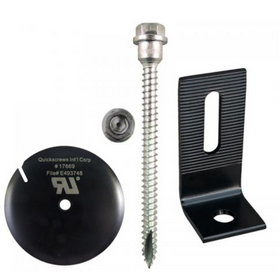
QuickBOLT QB2 with Microflashing Multi Roof Mount Solar Panel Fastener Kit
QuickBOLT
In Stock
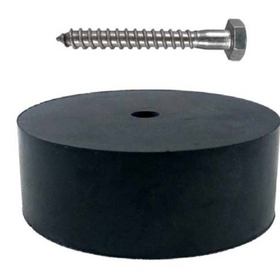
QuickBOLT 2-1/4" EPDM Solar System Conduit Mount w/Screw
QuickBOLT
In Stock
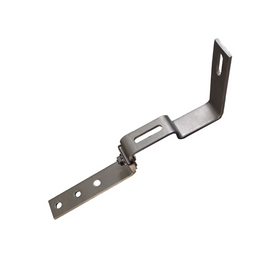
QuickBOLT Stone Coated Roof Height Adjustable 18mm for Side Mount Rails - Short
QuickBOLT
In Stock
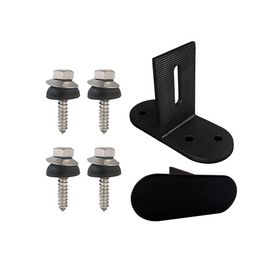
QuickBOLT Deck T Mount Solar Panel Fastener Kit
QuickBOLT
In Stock
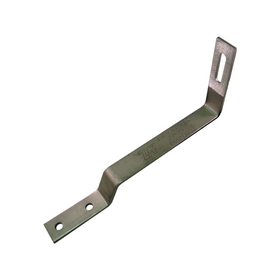
QuickBOLT Flat Tile Roof Hook for Solar Panel Side Mount Rails
QuickBOLT
In Stock
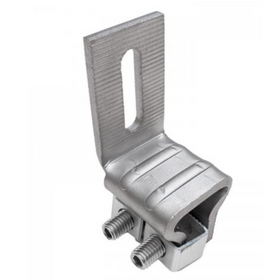
QuickBOLT Throne - The Set Screw Standing Seam Mount
QuickBOLT
In Stock
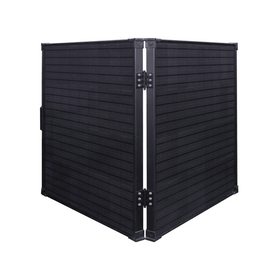
Lion Energy 100W 24V Portable Solar Panel
Lion Energy
In Stock

QuickBOLT 3" Microflashing Stainless Steel & EPDM - 17669
QuickBOLT
In Stock

Anker 625 Portable 100W Solar Panel
Anker
In Stock

SunGoldPower 10000W DC 24V Split Phase Pure Sine Wave Inverter With Charger
SunGoldPower
Out of Stock

Eco-Worthy
One of the systems Eco-Worthy offers is a 1.4 kW system with ten solar panels and a 400-watt turbine. While this system is designed for a 24-volt system, it certainly can be adapted to small homes in off-grid systems.
Wholesale Solar
Wholesale Solar offers a wide variety of complementary solar and wind systems. Some of these systems will generate more power than the average home could use. With a few energy efficiency measures, you should be able to sell some of that energy back to the grid. A backup battery could allow you to continue to use the energy your system produced during extended power outages (if you are connected to the grid) and during long, cloudy, windless days (if you are fully off-grid).
The Bottom line on Solar Wind Hybrid Systems
Fortunately, there are many ways that individual homeowners can reduce the carbon emissions of their homes while pushing us collectively towards a greener electrical industry.
Hybrid renewable energy systems allow the homeowner to take full advantage of the different natural elements that interact with the site of their house. In ideal locations, you will be able to generate electricity around the clock, and might even be able to sell your excess power back to the grid.
Tobias Roberts
Tobias runs an agroecology farm and a natural building collective in the mountains of El Salvador. He specializes in earthen construction methods and uses permaculture design methods to integrate structures into the sustainability of the landscape.
